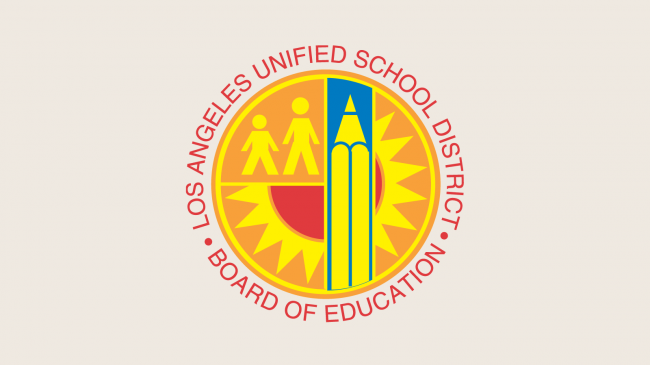The Los Angeles Unified School District (LAUSD) faces immense fiscal challenges. The district has lost more than 245,000 students in the last 15 years. Deficit spending is projected to drain the district’s reserve level from 11.64 percent of total general fund expenditures in 2016–2017 down to a projected -5.61 percent by 2020–2021—even assuming five years of substantial revenue growth from the state of California. The most recent audit of the school district (through June 30, 2017) found that LAUSD had liabilities that surpassed assets by $5.1 billion and an unrestricted net position (which must be paid out of future general fund unrestricted revenue) of -$10.9 billion.
These numbers from the latest audit actually understate the district’s liabilities because a more recent 2017 actuarial valuation report, released in April 2018, increases the district’s health care benefit liabilities (aka Other Post-Employment Benefit, or OPEB, debt) from $13.7 billion in 2015 to $15 billion in 2018. On a per-pupil basis, the OPEB debt alone is about $30,000 per student for each of the 500,000 students currently enrolled in LAUSD.
To put LAUSD’s deficit spending in context, as of March 2017 only 39 of California’s 980 school districts were designated as at risk of financial insolvency by their county offices of education, meaning the district has poor financial health and will have a hard time meeting its financial obligations in the next two years. With the recent temporary, state-funded increases in school revenue in California, most districts have managed to balance their budgets, or at least make it appear that way.
LAUSD is unique in California and the nation because the size of its projected budget deficits and overall debt dwarfs most other urban school districts. The district’s most recent budget of $7.5 billion, approved in June 2017, projected that LAUSD will face a $422-million shortfall by the 2019–2020 school year. In addition, in four years the combination of pension costs, health and welfare costs, and special education costs are projected to take up 57.5 percent of unrestricted general fund revenue (LAUSD’s main operational funding) before the district spends a single dollar to run a regular school program.
This study takes a fresh look at LAUSD’s fiscal health, focusing on what has happened with the district’s finances since LAUSD Superintendent Ramone Cortines’ highly commended and widely cited November 2015 Independent Financial Review Panel (IFRP) report warned of looming financial disaster for LAUSD. This study reviews the district’s current financial position by examining the past findings of the IFRP report and the impact of California’s new education funding formula, LAUSD’s enrollment decline, and the proliferation of charter schools.
This study finds that LAUSD attributes an unduly high percentage of its decline in enrollment to charter schools, which outperform the district at most every measure, instead of addressing the root causes of its own financial woes. Data projections clearly show a structural and compounding annual deficit that threatens to overwhelm the core operations of the Los Angeles Unified School District.
This study finds this structural deficit forged from hiring surges, burgeoning and unaddressed pension and benefit obligations, unaddressed low attendance, overextended facilities, and antiquated management and financial structures— all during a precipitous fall in enrollment. Rather than constraining popular and effective charter schools, this study recommends LAUSD take the following measures to “right-size” its structure and operations to serve its students sustainably:
- Overhaul long-term debt obligations, and act where possible to initiate cost-saving options.
- Target the low-hanging fruit of improving student and staff attendance to increase funding.
- To right-size the district to serve fewer students, initiate staff reductions and strategic school closures.
- Mitigate enrollment declines by focusing on providing higher quality options, such as those offered by the more popular and academically effective charter schools.
- Modernize the district’s school finance system by allocating dollars directly to schools and giving principals the authority and responsibility to manage budgets.
This will affect financial transparency, which will provide district leaders with crucial information to understand which schools are under-enrolled and financially unsustainable and how better to target resources to individual schools and students. Rather than casting blame, LAUSD needs to recognize that the structural deficit demands immediate attention. In 2018, it still needs to do the difficult work outlined in the 2015 IFRP report to right-size the district.
LAUSD is once again at the edge of a fiscal cliff, as employee costs and long-term obligations continue to increase expenditures and use up the available revenue, just as new revenue begins to slow or decline. Rather than right-size the district to line up staffing positions with the reality of declining enrollment, the common narrative has been to blame charter schools for the decline and the financial crisis. The days of district monopoly and residential assignment have given way to parent choice, forcing public schools to compete for students—a real win for families. LAUSD can do better, but first, it must stop pointing fingers and get its financial house in order. This study’s recommendations aim to provide helpful options to realize that goal.
Infographic: LAUSD’s Financial Outlook
Stay in Touch with Our Pension Experts
Reason Foundation’s Pension Integrity Project has helped policymakers in states like Arizona, Colorado, Michigan, and Montana implement substantive pension reforms. Our monthly newsletter highlights the latest actuarial analysis and policy insights from our team.




